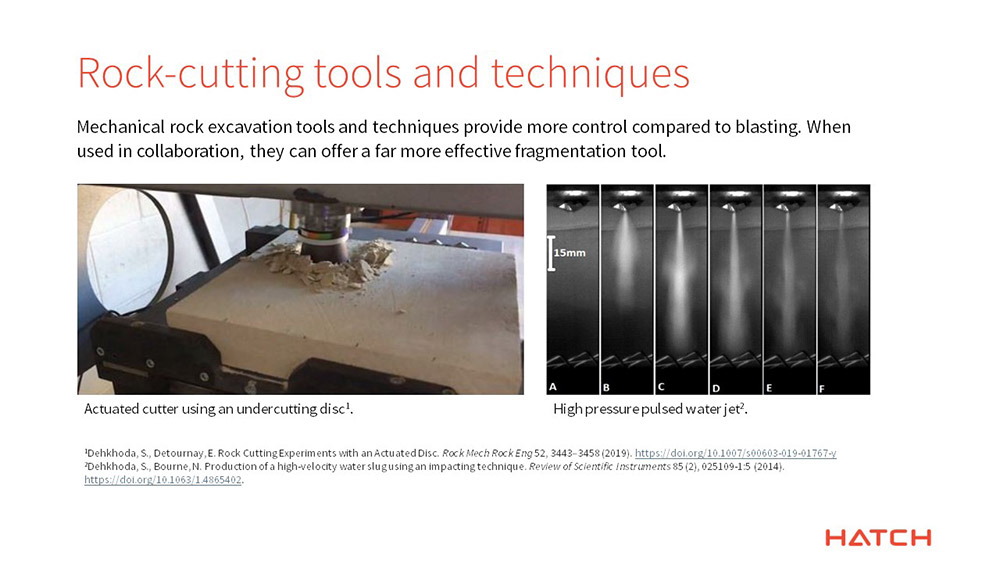Looking ahead at rock fragmenting, one crack at a time
Selective mining is one solution that supports the viability and sustainability of mining into the future. In recent decades, high commodity prices and economies of scale have driven mining companies to extract large volumes of rock and break them up later at the plant. Over time, as the percentage of valuable minerals dropped, this arduous process caused strains on recovery, cost, and performance. Selective mining is a more targeted process that focuses on extracting only the rocks that contain valuable minerals, eliminating worthless materials from passing into the refining stream. Selective mining plays an essential role in improving the plant’s extraction productivity and performance.
“While selective mining helps to intensify operational performance, it also minimizes the environmental footprint of mines because fewer waste materials are mined and refined.”
Selective fragmentation enables selective mining. Fragmentation is the first step to free up and extract minerals from the host rock. Typical blasting usually leads to dilution between the rock with the valuable ore and the waste rock. To eliminate this dilution, selective fragmentation fractures the rock material where it's strictly necessary and targets only the valuable ore.
In addition to volatile commodity prices influencing decision-making, in recent years, social and environmental responsibilities have also become important decision drivers. There are increased demands from stakeholders, communities, and governments to ensure that raw materials are mined responsibly, minimizing the impact to the environment. While selective mining helps to intensify operational performance, it also minimizes the environmental footprint of mines because fewer waste materials are mined and refined. This process helps ensure that greater long-term value is returned to society.
“Innovative technologies will be a key driver in the future of mining processes, with more and more work performed by machines.”
Mining operations also account for 10 percent of the world’s energy consumption. Ore hardness, circuit efficiency, grind size, and feed grade affect the energy intensities in mines. Approximately 70 percent of the energy consumed is in the comminution process, which breaks rock into fine particles to separate the valuable elements. Selective mining improves the energy intensity of producing raw materials because all the energy goes towards producing valuable minerals, instead of towards removing waste.

Many of our clients are applying the selective mining concept to provide more efficiency in their operations. BHP’s precision mining and Newcrest’s selective processing initiatives focus on how the industry can characterize mineral bearing rocks in mines to extract ore and reject waste early, before it reaches the processing plant. If we’re sending highly concentrated materials with less waste to the plant, it will ensure more production efficiency and less waste generation. Hatch provides a multi-disciplinary approach that exploits an in-depth understanding of a rock’s behavior and various fracturing techniques to target optimum liberation at the mine, enabling early waste rejection. This unique service offering is enhanced once incorporated with selective mining.
Innovative technologies will be a key driver in the future of mining processes, with more and more work performed by machines. For hard rock mining, agile and effective machines are needed to fragment strong mineral-bearing materials. These will be hybrid machines, combining mechanical cutting equipment with novel technologies, such as microwaves, lasers, or water jets. Some of the rock-cutting tools currently being used in selective mining include an actuated cutter and a high-pressure pulsed water jet (see image above).
In underground mines, machines equipped with advanced digital and sensing equipment will revolutionize how we work. When automated, these machines will improve safety by removing workers from high-risk areas, such as confined spaces and the rock face. With new technologies, selective mining offers the potential to perform tasks more safely and effectively, while increasing productivity and reducing long-term environmental impact.
To learn more about our expertise and innovation in mining, click here.
